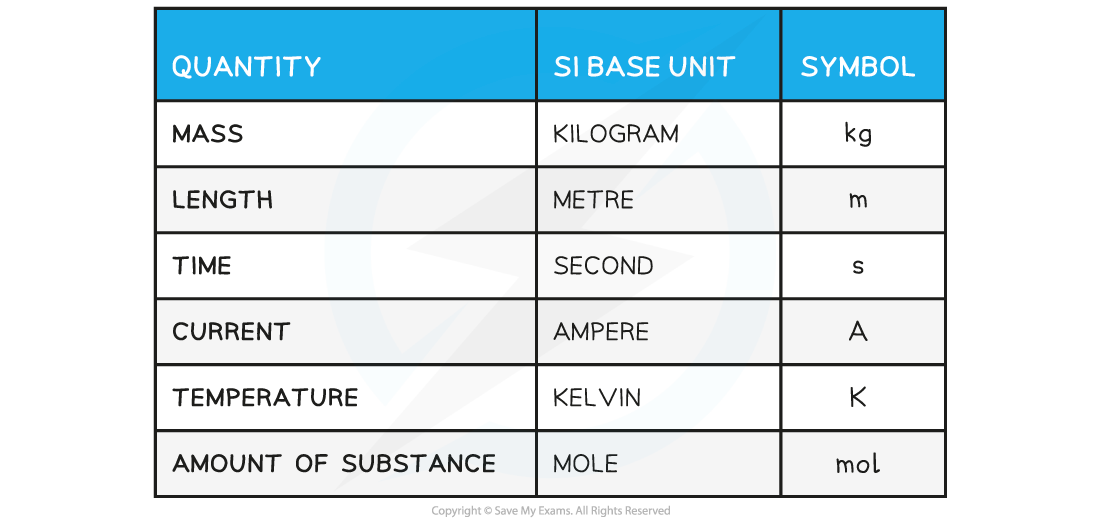- 翰林提供学术活动、国际课程、科研项目一站式留学背景提升服务!
- 400 888 0080
AQA A Level Physics复习笔记1.1.1 SI Units
SI Base Quantities
- There is a seemingly endless number of units in Physics
- These can all be reduced to six base units from which every other unit can be derived
- These seven units are referred to as the SI Base Units; this is the only system of measurement that is officially used in almost every country around the world
SI Base Quantities Table

Exam Tip
You will only be required to use the first five SI base units in this course, so make sure you know them!
Derived Units
- Derived units are derived from the seven SI Base units
- The base units of physical quantities such as:
- Newtons, N
- Joules, J
- Pascals, Pa, can be deduced
- To deduce the base units, it is necessary to use the definition of the quantity
- The Newton (N), the unit of force, is defined by the equation:
- Force = mass × acceleration
- N = kg × m s–2 = kg m s–2
- Therefore, the Newton (N) in SI base units is kg m s–2
- The Joule (J), the unit of energy, is defined by the equation:
- Energy = ½ × mass × velocity2
- J = kg × (m s–1)2 = kg m2 s–2
- Therefore, the Joule (J) in SI base units is kg m2 s–2
- The Pascal (Pa), the unit of pressure, is defined by the equation:
- Pressure = force ÷ area
- Pa = N ÷ m2 = (kg m s–2) ÷ m2 = kg m–1 s–2
- Therefore, the Pascal (Pa) in SI base units is kg m–1 s–2
转载自savemyexams

早鸟钜惠!翰林2025暑期班课上线

最新发布
© 2025. All Rights Reserved. 沪ICP备2023009024号-1








